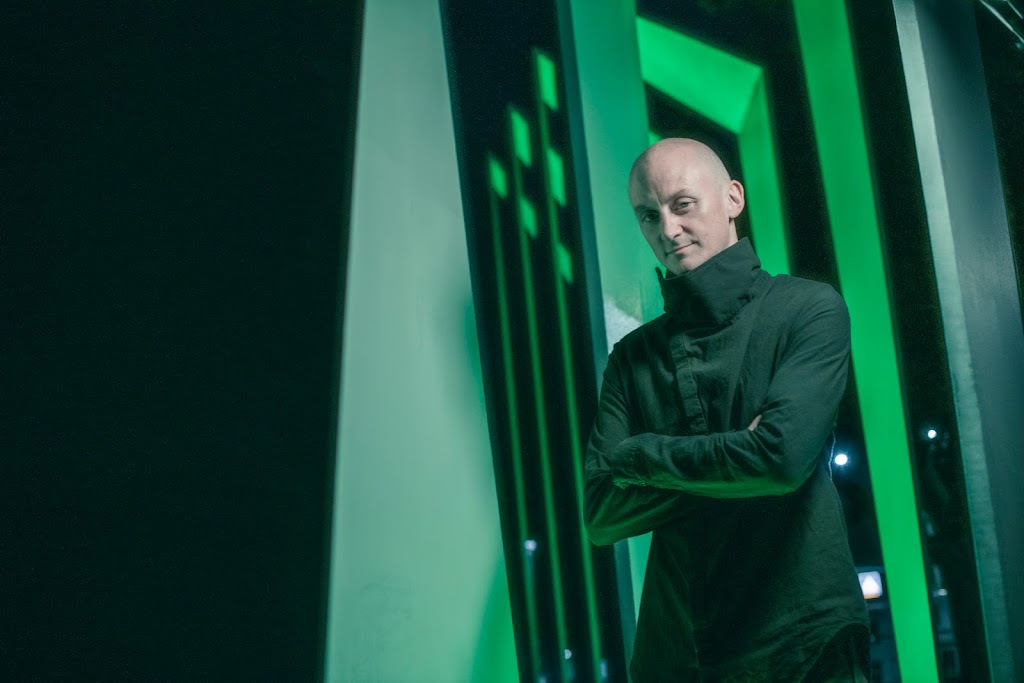Kangding Ray: “I’m a very slow producer. I’m more like a carpenter”
Kangding Ray aka David Letellier is a French experimental artist living in Berlin. As a long-time member of the Raster Noton roster, the musician has established himself as a master with a keen attention to detail, demonstrating his views on techno. David talked about his album ULTRACHROMA, his personal label ara and modern cultural trends.
1. You started curating a label, besides writing your own music: don’t you feel an extra burden of responsibility?
I started the label because I feel that at this point of my career, I want to have full control on my creative process, and be able to create an entire universe around a release.
But it sure is a huge undertaking, and a lot of work to curate and organize, especially as we do everything ourselves with a very reduced team.
The aim of the label is to build a community of listeners who are passionate about the music rather than the persona behind it. Like-minded people supporting artists who are approaching creation in a similar manner : that means focused on developing a specific, singular and sometimes multidisciplinary artistic approach to electronic music. We have some incredible releases coming up in various forms. I feel very lucky to have them on board.
2. A lot of institutions are teaching sound design these days. What do you think is central to working with sound and the principle of teaching such a field?
The first thing to understand is that sound only becomes real through space and time, so the same music will have a different meaning depending on the context where it is diffused.
3. Do you agree that we live in a post-glitch era?
If you refer to the early 2000 “glitch” scene, I would say we live in a post-post-post glitch era then.
But glitch is for me more a procedure, a tool, a medium, rather than a style on its own.
4. Do you try to adapt your sound to the modern realities of general cultural trends?
For sure, artists sometimes entertain the myth that they do their own thing without any outside influence, but the truth is unless you are in a little bubble, you will always get some kind of influence.
And that’s a good thing, reacting to what your peers are doing is a way to stay alert and relevant.
5. Your album ULTRACHROMA once again confirms your attention to detail. How did you develop this quality in yourself while working on the tracks?
This album is the result of 3 years of sonic research into finding new directions to develop my music. Over time, I have gradually evolved from my early works of filigrane ambient to a much more club-focused sound.
Now that I have my own platform with ara (about recording artists), I wanted to experiment further and beyond techno, leave some of my habits and compositional gestures behind, question my intentions, and then see what I can find that way.
There are two ways to react to the current chaos we live in : either you emphasize the dystopian and nihilistic feeling of the world out there, or you propose new directions and alternatives.
I wanted this album to be an oblique take on a possible psychedelic future: hyper-digital, intricate, nervous, but also colorful and ultimately really beautiful. Like what is left of dance-music after an ego death.
6. The term “sonic architecture” is used to describe your art by some listeners. How do you understand this phrase?
I graduated in Architecture and I worked as an architect prior to becoming a full-time musician. I guess there are still signs of it in my music.
7. When does creativity end and craft begin and how do these two notions get along?
It’s different for everyone. There are different types of producers out there, some of them will make a track in one day and be happy with it.
Personally, I’m a very slow producer. I’m more like a carpenter, like I’m working on wood, carving and carving until I find the essence of it.
I tend to work on a track, then go back and do another version and go back again, then try going further. It’s a bit of a painful process but it’s the only way I can be happy with the result at the end.
8. Which of the musicians of the first wave of the glitch scene managed to show the different sides of this genre most vividly?
Ryoji Ikeda, Mark Fell, Alva Noto
9. Describe Berlin in one sentence.
Wunderbare shithole.
10. A lot has been said about interesting, quality Berlin techno. How do you distinguish a good one from mediocre?
Quality is subjective and different for everyone, but I think that in every piece of music, you can feel the intention of the creator, and the honesty of that first intention defines a lot about the end-result.
11. Don’t you feel that music is getting simpler every year?
If you judge on what’s happening on Instagram, definitely, but there is a whole different universe out there who isn’t part of that whole circus and still produces and creates incredible things. You just have to look for it behind the glitters and smoke screen of the vanity and attention economy.






